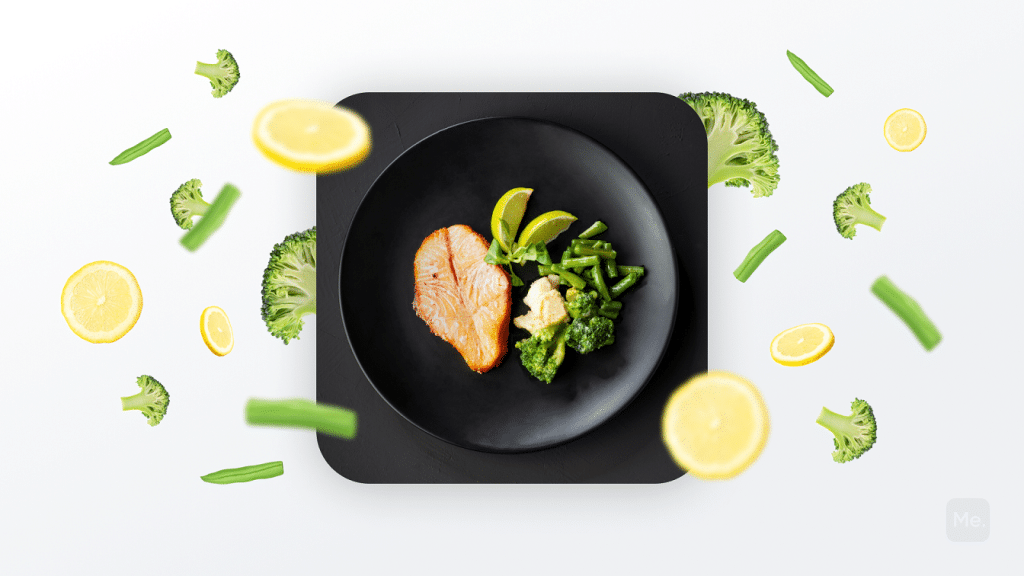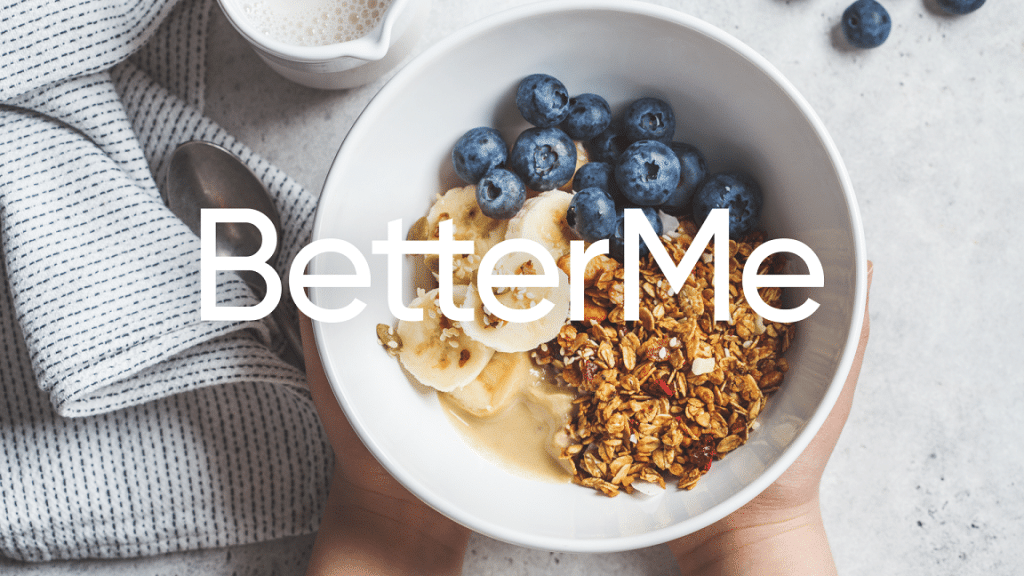What comes to mind when you hear words like “exercise” and “healthy eating”? If you’re like most people, you’ll think of weight loss. Although exercise and healthy eating are both important to achieving and maintaining a healthy weight, that’s not the whole story. Being physically active and eating nutritious foods do much more than helping you lose weight – they are essential to a healthy body and mind. The relationship between physical activity and nutrition is actually a cycle where each one affects the other. Their effects on the body and mind depend on each other, and they affect important functions such as mobility, mood, and energy level as well. In this article, we’ll explore ways to improve your health by understanding how these two factors influence each other.
How Are Physical Activity And Nutrition Related?
Good nutrition and physical activity are essential parts of your health and well-being. Together, they perform two important functions (7):
- Decrease your risk of developing serious health conditions such as diabetes, heart disease, stroke, and cancer.
- Manage health conditions so they don’t worsen over time.
Unfortunately, most people do not eat a healthful diet and are not physically active at levels needed to maintain good health.
In fact, many Americans eat a high-calorie diet that is also nutritionally poor, which means that it has too much fat, sugar, and salt in it. The result shows that about 34% of American adults and 16% of adolescents are obese according to the Centers for Disease Control and Prevention (CDC) (9).
Being overweight or obese can increase your risk of serious health conditions such as heart disease, stroke, type 2 diabetes, and certain types of cancer. And it increases your chances of dying from these conditions (9).
Why Physical Activity Is Important
There are many psychological and emotional benefits to being physically active. Engaging in regular physical activity and exercise can:
Protect You From Disease
The more active you are, the better your health is likely to be. You can reduce your chances of developing serious health conditions by engaging in regular physical activity.
Physical activity and exercise help control your weight and reduce your chances of developing (5):
- Coronary heart disease
- Type 2 diabetes
- High blood pressure
- Osteoarthritis (a degeneration of cartilage and its underlying bone within a joint)
- Low back pain (due to osteoarthritis or other causes)
- Some cancers (such as colon cancer)
Manage Symptoms And Improve Functioning In People With Chronic Diseases Or Disabilities
Physical activity is an important part of the management of certain chronic conditions. It can help you by (5):
- Improving your strength, endurance, and energy level;
- Helping you move around better and with less pain;
- Helping you control your weight;
- Helping you breathe more easily during physical activity or exercise; and
- Preventing disease flare-ups or worsening of symptoms for people with chronic diseases such as arthritis, diabetes, heart disease, and high blood pressure.
Read More: Physical Activity Vs. Exercise: What’s The Difference And Does It Matter?
Boost Your Mood
Physical activity has been shown to improve mood and relieve stress (3). This effect has been attributed to the release of endorphins in the body, which are chemicals that act as natural pain relievers. Endorphins also may be responsible for the so-called “runner’s high.” This is a feeling of euphoria and vitality many people experience after engaging in physical activity.
Some of the mental health conditions that can be improved by being more active include (3):
- Depression
- Generalized anxiety disorder
- Post-traumatic stress disorder (PTSD)
- Bipolar disorder
Improve Your Sleep
More physical activity, especially moderate activity performed during the day, can help you fall asleep faster at night and sleep more soundly.
During sleep, your body restores itself— resetting your immune system, strengthening your heart health, renewing your energy levels, and improving memory function. People with chronic insomnia are encouraged to engage in regular physical activity because it can help them sleep better (4).
Improve Your Concentration And Memory
Physical activity can help your brain work better. This is because it increases blood and oxygen flow throughout the body, including to the brain. Being physically active has been linked to improved concentration and memory, both of which are important for success in school and at work (11).
Maintain Lean Muscle Mass
Inactivity leads to muscle loss and weakness, which then cause other health problems, such as falls and fractures. Muscle mass naturally declines with age, but regular physical activity slows this decline. It also helps you maintain a healthy weight. Decreased body fat and increased muscle mass can reduce your risk of osteoporosis and other bone problems (5).
Improve Your Quality Of Life
Being active will help you feel better about yourself and your abilities. Regular physical activity may increase your chances for personal satisfaction, improved self-esteem, and feelings of competence. It has also been shown to help cope with the experience of chronic illness (5).
Physical activity also can be fun and may provide an opportunity for you to spend time with your family or friends while socializing and catching up on each other’s lives.
How Much Physical Activity Do You Need?
The 2008 Physical Activity Guidelines for Americans recommends that adults do at least 150 minutes (2 hours and 30 minutes) a week of moderate-intensity aerobic physical activity (i.e., brisk walking, water aerobics, ballroom dancing) (1).
Alternatively, you can do 75 minutes (1 hour and 15 minutes) a week of vigorous-intensity aerobic physical activity (i.e., running, swimming laps, riding a bicycle fast or on hills), or an equivalent combination of moderate- and vigorous-intensity aerobic activity (1).
They also recommend muscle-strengthening activities involving major muscle groups on 2 or more days a week (1).
It’s important to remember that the guidelines recommend at least 150 minutes of moderate-intensity aerobic physical activity per week in order to provide health benefits. Vigorous-intensity activity, however, serves as an adjunct for improving fitness and burning more calories.
To lose weight, you need to create a calorie deficit (that is, burn more calories than you eat through physical activity and daily life). People who are generally inactive may need to start with as little as 15 minutes of walking per day. As you get more fit, you can increase this time until you reach 150 minutes a week.
If you have a chronic condition, talk to your doctor before starting an exercise program. They may recommend that you begin with light activity and gradually work up to more intense levels.
While most adults benefit from regular physical activity, it’s important to check with your doctor or health care provider before beginning any new exercise program.
If you wish to cinch your waist, tone up your bat wings, blast away the muffin top – our fitness app was created to cater to all your needs! BetterMe won’t give excess weight a chance!
How To Start Incorporating Physical Activity Into Your Day?
Walking is a great way to be active. It’s easy and free and can be done almost anywhere: at work or school, inside malls and parks, and around your neighborhood. Start by finding a walking partner who will encourage you to keep moving.
Increase the intensity of your walks as your fitness level improves. Try hiking with a friend or go to a walking class or video. When you’re ready for more, try jogging or joining a racquetball club.
You can also include physical activity as part of your daily routine, for example:
- Taking the stairs instead of the elevator
- Walking to do errands instead of using a car
- Taking your dog for a walk or playing with your children
- Using a push mower instead of a riding lawn mower
- Working in the yard or doing housework
- Dancing, swinging on swings, and using playground equipment at parks and schools
If you’re feeling ready to make big changes, join a gym, take a dance or aerobic class, find an activity that’s new and exciting for you (such as rollerblading or hoop dancing), or buy some equipment.
If you can’t fit in many minutes of moderate-intensity physical activity all at once, try breaking it up into blocks of ten minutes or more throughout the day. Even physical activity that is of low intensity can provide health benefits if done regularly (8).
Why Nutrition Is Important
Good nutrition is as important as physical activity for staying healthy and managing chronic illnesses (a).
Some of the benefits of a healthful diet include:
Reduced Risk Of Diseases
A diet rich in fruits, vegetables, whole grains, low-fat dairy products, and lean sources of protein (such as fish or beans) can help reduce your risk of heart disease. It also may reduce the risk of developing type 2 diabetes and chronic illnesses, such as (2):
- Cancer-including breast, colon, ovarian, uterine, prostate, and esophageal cancers
- Hypertension (high blood pressure)
- Osteoporosis
- Asthma
Weight Control
Diet is also part of the equation when it comes to weight control. If you eat more calories than your body uses through physical activity, your body stores the extra calories as fat (2).
A healthful diet can help you maintain a healthy weight or lose pounds if you’re overweight.
Help Improve Mental Health Problems
Eating healthfully can also help prevent or relieve depression, bipolar disorder, Alzheimer’s, and other mental health problems. It’s not clear whether these conditions are more common in physically inactive people. But studies show that certain dietary supplements (such as omega-3 fatty acids found in fish oil) may improve mental outlook (2).
Increased Energy Levels
A healthy diet can also help boost your energy level. In fact, eating a nutritious breakfast in the morning may help you have more sustained energy during the day. Moreover, the types of foods you eat before and after physical activity may make a difference in how well you perform during exercise and how quickly you recover afterward.
Read More: How To Start Getting Fit After 40: It’s Never Too Late To Reap The Benefits Of Physical Fitness
What Does Good Nutrition Consist Of?
A healthy diet has the following qualities:
Low In Trans Fats And Saturated Fats
Trans fats and saturated fats are types of fat you need to limit in your diet. Trans fats can raise your LDL (“bad”) cholesterol and also lower your HDL (“good”) cholesterol. Saturated fat increases both your LDL and HDL cholesterol, which may increase your risk for coronary heart disease (6).
Trans fat can be found in foods such as:
- Packaged baked goods such as cookies, cakes, and pies; doughnuts; crackers; stick margarine, and other spreads
- Fried foods such as chips, fries (including fast-food fries), and other processed snacks
- Stir-fried dishes
Saturated fat can be found in:
- Red meat and other sources of saturated fat such as cheese, whole milk, and other full-fat dairy products
- Butter and other sources of saturated fat such as coconut, palm kernel, and palm oils
Low In Sodium (Salt)
Most Americans eat too much sodium. The recommended limit for most adults is no more than 2,300 milligrams (mg) per day (10). That’s about a teaspoon of salt. To lower your sodium intake, choose fresh foods over processed ones, and use little or no salt when cooking or eating. It also helps vary the type of salt you use at the table.
To reduce sodium in recipes:
- Use ingredients such as spices, herbs, lemon juice, vinegar, and salt-free seasoning blends
- Substitute no-salt-added canned vegetables for canned regular vegetables
- Limit commercially prepared soups, broths, sauces, dips, and salad dressings; these are often high in sodium
Low In Cholesterol
Foods with cholesterol should be limited and only eaten in moderation, such as:
- Egg yolks, organ meats (such as liver), and some dairy products such as whole milk, cream, and butter
- Coconut oil and palm kernel oil; these oils contain a type of fat that has a large percentage of saturated fat, however, they also have a different kind of saturated fat than other foods
High In Fiber
Fiber is the part of plant foods that your body doesn’t digest. It helps keep you normal and may help lower your risk of heart disease, some cancers, and diabetes (2).
These foods also make you feel full longer, which helps with weight control (2).
The best sources of fiber are whole grains (such as whole-wheat bread and pasta), vegetables, fruits, and legumes (such as dried beans or lentils). Eating these foods in combination can help control weight and lower cholesterol.
To increase your fiber intake, choose whole-grain bread, pasta, cereals, rice, and other foods that are high in fiber. Also, add more fresh fruit to your diet with breakfast or snack time.
BetterMe is your fast-track ticket to a long-lasting weight loss! Tailor your fitness journey and maximize your results with just a couple of swipes!
High In Lean Proteins
Protein helps your body repair cells and make new ones. It’s important for growth and development, such as during pregnancy. It also helps you maintain a healthy weight because protein takes more energy (calories) to digest than fats or carbohydrates do (2).
But some high-protein foods may be less healthy for your heart than others.
That’s because some high-protein foods contain unhealthy saturated and trans fats, such as:
- Sausage, bacon, and other processed meats (such as hot dogs)
- Highly processed fake “meats” (such as those made from soy or gluten)
Choose leaner sources of protein, such as:
- Fish
- Skinless poultry, lean beef or pork tenderloin, and other meats that are 90% or higher lean
- Egg whites (or two whole eggs for every three egg whites)
- Beans, peas, lentils, nuts, seeds, and soy products (such as tofu)
You can also replace some of your meat with beans, peas, lentils, and other high-fiber legumes.
Has Whole Carbohydrates
Good nutrition also includes whole grains. These foods are a key part of healthy eating because they deliver vitamins, minerals, and fiber that your body needs every day. Whole grains also contain B vitamins and phytochemicals that help protect against heart disease and some types of cancer (13).
The typical American diet is high in refined grains, such as white bread and pasta made from bleached or enriched flour. The process of refining grain removes the bran and germ and leaves mostly starchy carbohydrates behind, so these foods don’t have much nutritional value.
To decrease your risk for heart disease and keep your weight under control, choose whole grains, such as (13):
- Whole-wheat or wholemeal bread, brown rice, and other whole grains such as bulgur (cracked wheat) or quinoa (a South American grain that cooks like rice)
- Whole oats, barley, and buckwheat; these oils have a lower glycemic index than refined grains do, which means that they release their sugars slowly so you don’t get a spike in blood sugar levels
Has Good Fats
Some fat is necessary for good health. However, too much of certain types of fats can increase your risk for heart disease, some cancers, and other health problems (2).
Your body needs healthy fats for various functions, including absorbing certain nutrients and regulating your blood pressure, blood sugar levels, and body temperature.
Examples of good fats include:
-
Omega-3 Fatty Acids
Omega-3 fatty acids are found in fatty fish, such as salmon, herring, mackerel, anchovies, sardines, and tuna. These fats help lower your risk for heart disease when you don’t eat too many calories (2).
-
Monounsaturated Fats
MUFAs are found in olive oil, canola oil, peanut oil, and other vegetable oils. These kinds of fats can improve blood cholesterol levels when they replace saturated fat in your diet (12).
The American Heart Association recommends replacing unhealthy trans fats (found in some margarine) with both monounsaturated and polyunsaturated fats (12).
-
Polyunsaturated Fats
PUFAs are found in corn, soybean, safflower, sunflower, and other vegetable oils.
These kinds of fat may help lower your risk for heart disease when they replace saturated fats in your diet. They also keep your levels of good cholesterol high (12).
Your best sources of healthy fat are foods that come from plants rather than animals. These include:
- Oils such as olive oil, canola oil (rapeseed oil), corn oil, soybean oil, and sunflower seed oil
- Seeds such as flaxseeds or chia seeds (also called Salba seeds)
- Nuts such as almonds, peanuts (also called groundnuts), or walnuts
Be aware that cooking with these oils at high heat can increase the number of harmful compounds in the oil. So limit your use of these oils to cooking at low temperatures, such as for stir-frying or baking.
Has Fruits And Vegetables
Another aspect of good nutrition is meeting your recommended daily amounts of vitamins and minerals, such as potassium, dietary fiber, calcium, and magnesium.
Fruits and vegetables can help you meet these recommendations because they’re rich in vitamins and minerals, such as potassium and many types of dietary fiber (2).
Colorful vegetables and fruits are also important sources of antioxidants. These substances help protect your cells from damage that may play a role in cancer, heart disease, and other chronic diseases (2).
How To Start Improving Your Diet And Nutrition?
Just like with exercise, start small when you’re trying to improve your diet.
Here are some tips that may come in handy:
- Start by swapping a couple of foods for healthier options.
- Start offering yourself healthy foods when you have the urge to eat something that isn’t good for you.
- Eat more fruits and vegetables, try having at least one fruit or vegetable with each meal.
- Always have water with you and drink it throughout the day to stay hydrated.
- Choose foods that are low in sugar and fat, such as whole fruit instead of juice or dried fruit.
- Check the food label for saturated fats and trans fats.
- Limit foods that have a lot of sodium, such as chips or fast food.
- Don’t over restrict yourself, give yourself a treat every now and then.
- Give it time and don’t get discouraged because positive changes will come with time.
The Bottom Line
Physical activity and nutrition go hand in hand. Making small changes in these aspects of your life can help you maintain a healthy weight, control blood pressure, or lower your risk for type 2 diabetes or heart disease.
Most of all, the changes in your diet and exercise should be gradual so that it’s easy to maintain. Changing everything drastically will cause you more stress and fail to see your plan through.
Get your personalized
meal plan!
DISCLAIMER:
This article is intended for general informational purposes only and does not serve to address individual circumstances. It is not a substitute for professional advice or help and should not be relied on for making any kind of decision-making. Any action taken as a direct or indirect result of the information in this article is entirely at your own risk and is your sole responsibility.
BetterMe, its content staff, and its medical advisors accept no responsibility for inaccuracies, errors, misstatements, inconsistencies, or omissions and specifically disclaim any liability, loss or risk, personal, professional or otherwise, which may be incurred as a consequence, directly or indirectly, of the use and/or application of any content.
You should always seek the advice of your physician or other qualified health provider with any questions you may have regarding a medical condition or your specific situation. Never disregard professional medical advice or delay seeking it because of BetterMe content. If you suspect or think you may have a medical emergency, call your doctor.
SOURCES:
- 2008 Physical Activity Guidelines for Americans (n.d., health.gov)
- Defining a healthy Diet: Evidence for the Role of Contemporary Dietary Patterns in Health and Disease (2020, nih.gov)
- Exercise for Mental Health (2006, nih.gov)
- Exercising for Better Sleep (n.d., hopkinsmedicine.org)
- Health benefits of physical activity: the evidence (2006, nih.gov)
- Healthy Diet (2020, who.int)
- Integrated Role of Nutrition and Physical Activity for Lifelong Health (2019, nih.gov)
- Low-Intensity Walking Activity is Associated with Better Health (2013, nih.gov)
- Obesity is a common, serious, and costly disease (2021, cdc.gov)
- Sodium in Your Diet (n.d., fda.gov)
- The Influence of Exercise on Cognitive Abilities (2014, nih.gov)
- The Skinny of Fats (2020, heart.org)
- Whole Grains (n.d., harvard.edu)
















